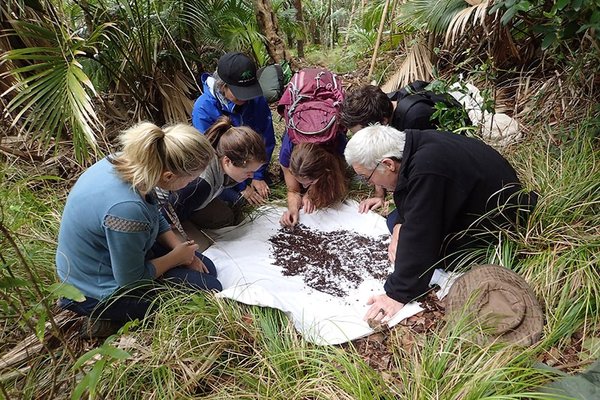The ecology of Australian ‘Jewel Beetles’
The ‘Jewel Beetles’, or Buprestidae are the 8th largest family of beetles in the world, totalling about 14,700 known species and being found in all but the coldest landmasses and environments. They are popularly called ‘Jewel Beetles’ owing to the resplendent nature of many species.
The Australian Jewel Beetle fauna is a rich and often spectacular one, and exhibits as many biogeographic peculiarities as does our plant life and vertebrates. 77 genera and about 1200 described species are known from Australia.
Although Australian jewel beetles have been the subject of numerous taxonomic studies, there is relatively little published biological data. What biological data there is, is usually not very specific. Only in more recent papers are biological and ecological data (if known) generally provided. Although the larger and colourful species, have been a much sought after family by collectors, most do not publish their observations.
Recently I co-published the first major Australia-wide review of the known host plant associations of the Australian buprestid fauna. The paper is principally the collation of data by (the late) Charles ‘Chuck’ Bellamy from the California Academy of Food and Agriculture, myself, and with contributions from Jack Hasenpusch and Allen Sundholm, both Australian entomologists with a long association with the Australian Museum’s entomology department. We hope that the review will act as a catalyst for future studies and observations.
Our paper summarises published data for 671 species in 54 genera, and gives new host data for 155 species in 17 genera. To achieve this, we drew on published records, but also added our own records gained from many years of fieldwork.
This information is important in establishing a more informed indication of the biogeographical patterns and general biology of the fauna, as well as ecological and evolutionary associations with plant species; not least of all the role of the flower-frequenting taxa as pollinators. In our paper we stress, “in a world of increasing climate change and fragmentation of native vegetation such data are essential for the foundation of management strategies and the conservation of biodiversity”.
Unlike some animals that can colonise and survive in urban parks and gardens planted with native trees and shrubs, the Australian Jewel Beetle fauna is dependent on expansive areas of native forests, heaths and woodlands. It is a fauna easily lost when confronted by the relentless clearing of native vegetation.
Some interesting Jewel Beetle facts:
- The aptly named, wholly black coloured, ‘fire beetle’ Merimna atrata has the habit of flying to burnt trees, but also is attracted to lights…a behaviour at odds with the fauna which are otherwise animals usually only active during the daylight hours of spring and summer.
- The larger sized flower-frequenting species (e.g. Temognatha, Calodema, Stigmodera) undertake relatively long, for an insect, inter-plant flights and so can serve not simply as pollinators but as agents of pollen transfer between widely separated plant populations; this being important for the survival of disjunct or isolated plant populations.
- Numerous species are highly attuned to the approach of other animals…entomologists in particular. The species-rich genus Melobasis, often found on the leaves of wattle trees (Acacia) readily fall from the leaves upon which they are resting or feeding at the approach of humans, whilst the distinctive yellow and black members of Astraeus characteristically flick their bodies from the she-oak branches on which they are commonly found.
Dr Geoff Williams
Research Associate
More information:
Bellamy, CL, Williams, GA, Hasenpusch, J and Sundholm, A (2013). A summary of the published data on host plants and morphology of immature stages of Australian jewel beetles (Coleoptera: Buprestidae), with additional records. Insecta Mundi 0293: 1-172.
Barker, S (2006) Castiarina, Australia’s richest jewel beetle genus. Australian Biological Resources Study, Canberra. 341 p.
Bellamy, CL (2002) Vol. 29.5 Coleoptera, Buprestoidea. In: W.W.K. Houston (Ed.) Zoological Catalogue of Australia, CSIRO Publishing, Melbourne xii + 492 p.
Williams, GA and Adam P (2010) The Flowering of Australia’s Rainforests. CSIRO Publishing, Collingwood. 200 p.














